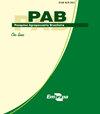用表型分型方法和物候分期定量测定普通豆根系
IF 0.7
4区 农林科学
Q3 AGRICULTURE, MULTIDISCIPLINARY
引用次数: 0
摘要
摘要本研究的目的是评价固定和分离普通豆群体根系的表型分型方法和理想物候期,以选择优良的基因型。试验在巴西圣卡塔琳娜州的两个城市进行,处理包括6个基因型,采用Shovelomics和WinRHIZO根表型方法,以及V4-4、R6和R8物候期。采用简单格点试验设计,对根角、竖直根长、左右水平根长、总根长、投影面积、根平均体积和根平均直径进行评价。对于所有变量,表型方法和物候阶段之间存在显著的交互作用,表明它们对根系评价的影响。Shovelomics和WinRHIZO表型方法在定量普通豆类植物根系方面是有效的,并且无论基因型如何,都表现出物候阶段的特异性。固定基因型和分离基因型的根系定量在两种方法中是类似的。Shovelomics法和WinRHIZO法在R8生育期和R6生育期对普通豆根系的评价效率更高。本文章由计算机程序翻译,如有差异,请以英文原文为准。
Phenotyping methods and phenological stages to quantify the root system of common bean
Abstract The objective of this work was to evaluate root phenotyping methods and the ideal phenological stage to quantify the root system of fixed and segregating common bean populations, in order to select superior genotypes. The experiment was carried out in two municipalities in the state of Santa Catarina, Brazil, and the treatments consisted of six genotypes, the Shovelomics and WinRHIZO root phenotyping methods, and the V4-4, R6, and R8 phenological stages. The simple lattice experimental design was used to evaluate the following variables: basal root angle, vertical root length, left and right horizontal root length, total root length, projected area, and root average volume and diameter. For all variables, there was a significant interaction between phenotyping methods and phenological stages, showing their influence on root system evaluation. The Shovelomics and WinRHIZO phenotyping methods are efficient in quantifying the root system of common bean plants and show specificity for phenological stages, regardless of the genotype. The quantification of the root system of fixed and segregating genotypes is analogous in both methods. The Shovelomics method is more efficient in evaluating the root system of common bean at the R8 stage, and the WinRHIZO method, at the R6 stage.
求助全文
通过发布文献求助,成功后即可免费获取论文全文。
去求助
来源期刊

Pesquisa Agropecuaria Brasileira
农林科学-农业综合
CiteScore
1.20
自引率
0.00%
发文量
45
审稿时长
9-18 weeks
期刊介绍:
Pesquisa Agropecuária Brasileira – PAB – is issued monthly by Empresa Brasileira de Pesquisa Agropecuária – EMBRAPA, affiliated to Ministry of Agriculture, Livestock and Food Supply. PAB publishes original scientific-technological articles on Plant Physiology, Plant Pathology, Crop Science, Genetics, Soil Science, Food Technology and Animal Science.
Its abbreviated title is Pesq. agropec. bras., and it should be used in bibliographies, footnotes, references and bibliographic strips.
 求助内容:
求助内容: 应助结果提醒方式:
应助结果提醒方式:


